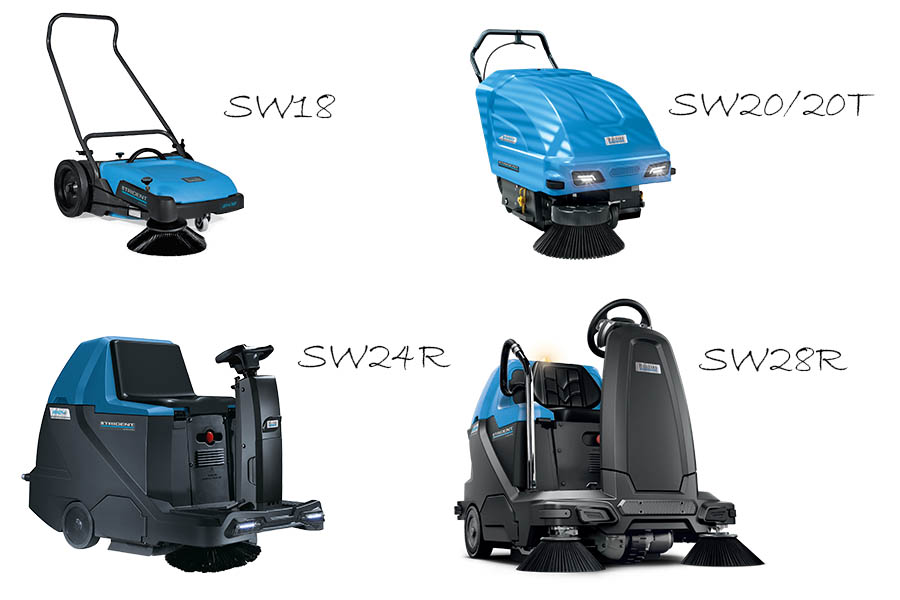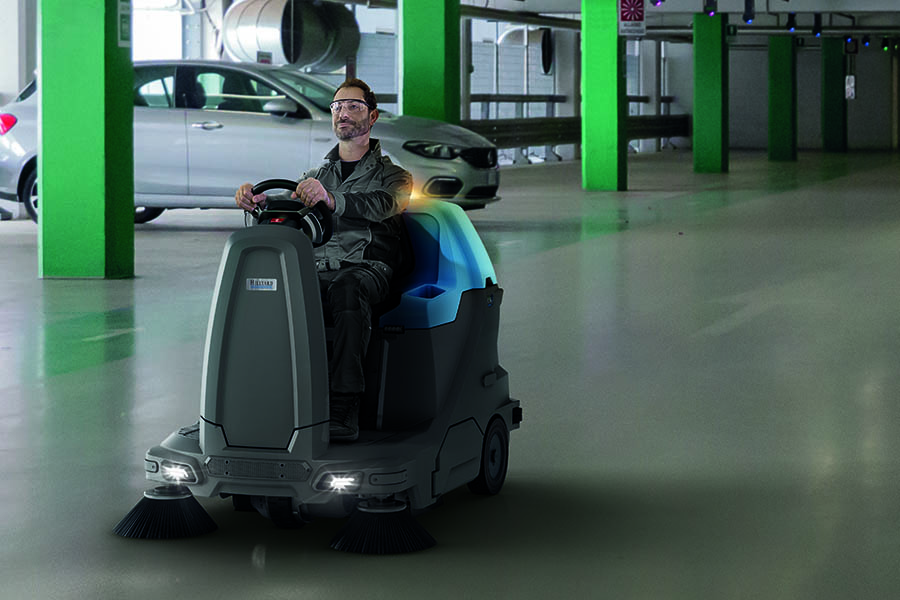
Commercial Sweeper Selection Guide: Choosing the right machine for your facility
Choosing the right sweeper is essential when it comes to maintaining cleanliness and order in your facility. The task of selecting a commercial sweeper can be overwhelming, considering the numerous options available in the market. However, you can make an informed decision with a clear understanding of your facility's needs and some key factors to consider. This article serves as a comprehensive guide, providing insights into how to choose a sweeper that best suits your facility's requirements. By considering various aspects such as floor type, size of the area to be cleaned, and specific cleaning needs, you can ensure efficient and effective sweeping operations, leading to a cleaner and safer environment for all.
Factors to Consider in Commercial Sweeper Selection
Assessing the Size and Surface of the Cleaning Area
The cleaning surface area is a pivotal consideration in the sweeper selection process. For larger cleaning surfaces, ride-on machines provide greater coverage and efficiency. Whereas, walk-behind equipment may suffice for smaller or more intricate spaces. An assessment of the area, including the size of aisles and doorways, will inform the choice of suitable equipment to navigate these spaces for efficient floor cleaning.
It's equally important to consider the type of flooring you're dealing with, ensuring that the machinery is compatible with surfaces ranging from concrete to carpets. Many sweepers have various brush options that are preferred for certain surfaces. For example, a heavy-duty stiff brush may be recommended for concrete because it will resist wearing better than a lighter-duty brush. However, the heavy-duty brush may be too aggressive for other surfaces and could damage the floor. Additionally, a soft natural bristle brush may be the right choice for carpet, whereas a stiffer brush could damage the carpet fibers.
If you have any questions about the right brush for your flooring, consult the manufacturer. In some cases, warranties can be impacted by using the wrong brush type. In addition, always test equipment in an out-of-the-way area where floor damage will have minimal impact.
Identifying the Type of Debris and Dirt in the Area
Sweepers aren't one-size-fits-all regarding the materials they're designed to pick up. Certain machine functions and brush characteristics are required to clean effectively.
Here are some factors to consider when choosing a sweeper:
Type of Debris
- Heavy Debris - Heavy debris, like stones or construction debris, may require stiffer brushes in order to pick it up.
- Wet Debris - Some sweepers can be used to pick up wet debris. Those machines will often have a bypass function that prevents moisture from entering the vacuum system.
- Light Debris and Dust - A softer brush can facilitate cleaning light debris and sweepers equipped with a vacuum system will help draw dust into the filter and debris bin. When collecting dust, a sweeper should be equipped with a filter shaker function.

Key Considerations in Commercial Sweeper Selection
Cleaning Efficiency and Speed
Efficiency and speed are the cornerstones of any cleaning operation. Small-area walk-behind sweepers excel in maneuverability, making them adept for spaces riddled with tight corners and obstructions—where rapid directional changes are frequent.
Trident Sweeper Productivity Rates
- SW18, 18" Push Sweeper - 27,980 square feet per hour
- SW20, 20" Battery Powered Push Sweeper - 24,490 square feet per hour
- SW20T, 20" Traction Drive Battery Sweeper - 27,980 square feet per hour
- SW24R, 24" Ride-On Sweeper - 54,900 square feet per hour
- SW28R, 28" Ride-On Sweeper - 97,950 square feet per hour
Main Brush Types and Availability By Model
Using the right brush is critically important to ensure efficient cleaning and to protect the surface cleaned. In this section we identify the brushes available for each Trident sweeper and discuss their application. There are no tools required to change the brush on any Trident sweepers, so users can change the brush when they move to a new area.
Light Duty Polypropylene
Application: Hard floors where scratching is a concern.
Models: Optional on the Trident SW20, SW20T, and SW28R.
Standard Duty Polypropylene
Application: Suitable for most surfaces, good for wet applications
Models: This is the standard brush for all Trident Sweepers.
Heavy-Duty Outdoor Brush
Application: Outdoor, concrete, or wet applications
Models: Optional on the Trident SW20, SW20T, and SW28R.
Natural Fiber
Application: Indoor carpet sweeping
Models: Optional on the Trident SW20, SW20T, SW24R, and SW28R.
Other Options and Specifications
In this section, we will outline some of the other options and specifications that might impact your decision making process. These options include filtration, damp debris pickup, shaker type, and debris bin size.
About cleaning damp debris
Many sweepers can handle damp debris, but to protect their vacuum systems and filters from damage, the custodian has to operate the machine correctly. For the SW20/20T, the custodian pulls a lever to block airflow to the vacuum system. For the SW24R and SW28R, the operator presses a button on the control panel to turn off the vacuum system.
About filter materials
- Paper - Good filter efficiency and lowest replacement cost.
- Polyester - Better filter efficiency, better dust release.
- Cloth / Fabric - Better filter efficiency, higher filter surface area, good dust release, washable.
- Tetratex - Best filtration, best dust release, high surface area, washable.
Other Sweeper Features
- SW18
- Primary Filter: None
- Damp Debris: Yes
- Shaker: None
- Debris Bin Capacity: 40 Liters
- SW20
- Primary Filter: Paper
- Stage 2 Filter: HEPA (Optional)
- Damp Debris: Yes. Pull lever to block airflow.
- Shaker: Manual
- Debris Bin Capacity: 50 Liters
- Onboard Vacuum Wand: No
- SW20T
- Primary Filter: Polyester
- Stage 2 Filter: HEPA (Optional)
- Damp Debris: Yes. Pull lever to block airflow first.
- Shaker: Electric
- Debris Bin Capacity: 50 Liters
- Onboard Vacuum Wand: No
- SW24R
- Primary Filter: Polyester (standard), Cloth (optional)
- Damp Debris: Yes. Turn off vacuum system first.
- Shaker: Electric
- Debris Bin Capacity: 65 Liters
- Onboard Vacuum Wand: No
- SW28R
- Primary Filter: Pre-filter (Optional, Carpet Only)
- Stage 2 Filter: Paper (Optional), Polyester (Standard), Fabric Pocket (Optional), Tetratex Pocket (Optional)
- Stage 3 Filter: HEPA
- Damp Debris: Yes. Turn off vacuum system first.
- Shaker: Electric
- Debris Bin Capacity: 105 Liters
- Onboard Vacuum Wand: Standard

Hillyard can help you select the right equipment
Hillyard, a prominent nationwide janitorial supply manufacturer and distributor, prides itself on providing personalized and expert guidance to help businesses choose the most suitable floor sweepers for their unique facility needs. With a team of local experts, Hillyard ensures that customers receive insightful recommendations based on their specific requirements and the nature of their floor surfaces. These experts are well-versed in the latest advancements in cleaning technology and are dedicated to assisting clients in making informed decisions to clean at the lowest total cost.
Complete the "I'm Interested" form at the bottom of this page, and a Hillyard representative will reach out to assist you in choosing the ideal floor sweeper for your facility. Benefit from our expertise and industry-leading solutions to enhance your cleaning efficiency.